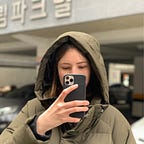04 | Macro UX: On your marks
Design a way for people to experience The Hoffman Centre collections.
Group members 🤝: Kate Chernysheva, Qendresa Selimi, Tatiana Bohsali and Maria Shuttleworth
<<< For my previous post, 03 | Macro UX, click here.
We begun the week thinking about the handoff aspect of our project, as this was a problem we left last week with.
To tie up loose ends, Tatiana begun by doing our speed dating analysis so that we could take our participants suggestions into account moving forward.
Creative & Digital Lab Drop-In.
After Kate’s suggestion, we attended a drop-in session with CTL to show them our user flow, asking what the best way to move forward would be.
They suggested Unity and Adobe Aero, however after some thought they directed us to the Digital Lab drop-in session who they thought would be able to help us more. They suggested we focus first on the animations as these would take the most time, and that Aero would be the easiest tool to work with.
Tutorial.
Throughout the whole process, without even questioning it, we had put a log-in/sign-up option at the beginning of our website. John challenged this assumption, saying that it is not essential for this experience to capture your identity; you can still go through the site and save things as an anonymous user. Instead, he suggested generating a unique password for each player to save progress — “a log-in without needing unique data from users” (Foale, 2021).
Qendresa and I took this into account whilst piecing together a website wireframe to show the basic layout of the website.
Meanwhile, Tatiana and Kate worked on the plane animations for Aero.
Our next task was to think about different representations for different information e.g. article, conferences, archive material, book chapters and reports. Since there was a lot of variety, we needed to look through the existing categories and organise it into a system within our project.
We begun by working with the Hoffmann Centre’s pre-existing categories: Demand, Industry and Land economy, and sorting via these.
Presentation Feedback.
During the presentation we asked which information layout was preferable for the main part of the site:
The overwhelming majority of the class preferred the globe on the left so we moved forward with this option.
At this point we had a lot of feedback and questions. A main point was that of community: our experience is very singular at present, so it was suggested we put more effort into the ‘human’ part. This is something we were thinking about through the forum section (to be at the end of the experience, but not currently designed), but we wanted the main part of the experience to be personal, encouraging people to create a personal library of information. This was a balancing act we would return to in the following week.
Another critique mentioned the paper planes: they are cute but they need a more distinct purpose. Currently they communicate a more childish version of the industry, so we would either need to embrace the metaphor more or adjust it slightly.
Finally, our experience was quite complicated in execution. A few people mentioned that they would get lost using it, meaning it needs more concentration on the instructional part.
Tutorial.
In the tutorial John mentioned that although the point towards community was debated in our feedback, it might not be necessary at this stage. Instead, we should think about depth: how far through the information organisation in the Hoffmann Centre are we going? And at present we are lacking a search/categorisation option to navigate through this depth.
Our next steps are to think about connecting metaphors with navigation, and planning out information hierarchy.
For my next post, 05| Macro UX, click here >>>
References.
- Foale, K., 2021. Everything is connected, but should it be?. [online] Geeks for Social Change. Available at: <https://gfsc.studio/2021/03/02/everything-is-connected.html> [Accessed 3 March 2021].
